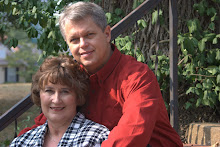
 The trip to Bethlehem was very interesting. Bethlehem is a Palestinian city in the central West Bank, approximately 5 miles south of Jerusalem. It has a population of 30,000. It is the capital of the Bethlehem Govern ate of the Palestinian National Authority and a hub of Palestinian culture and tourism. The town in inhabited by one of the oldest Christian communities int he world. Not only is it believed to be the place where Jesus was born, it is believed to be the birthplace of David and the place where he was crowned as king of Israel.
The trip to Bethlehem was very interesting. Bethlehem is a Palestinian city in the central West Bank, approximately 5 miles south of Jerusalem. It has a population of 30,000. It is the capital of the Bethlehem Govern ate of the Palestinian National Authority and a hub of Palestinian culture and tourism. The town in inhabited by one of the oldest Christian communities int he world. Not only is it believed to be the place where Jesus was born, it is believed to be the birthplace of David and the place where he was crowned as king of Israel.The city was sacked by the Samaritans in 529 AD, conquered by the Arab Aliphate in 637, captured and fortified by the Crusaders in 1099, and its walls were destroyed and rebuilt during the rule of the Ottoman Empire. The Ottomans lost the city to the British during WWI and it was to be included in an international zone under the 1947 United Nations Partition Plan for Palestine. Jordan occupied the city in the 1948 Arab-Israeli War, and it was occupied by Israel in the 1967 Six Day War Israel has retained control over the entrances and exits to Bethlehem, though day to day administration has been under the Palestinian National Authority since 1995. Needless to say, it has exchanged hands MANY times.
Modern Bethlehem has a Muslim majority but is also home to one of the largest Palestinian Christian communities. It's the home of the Church of the Nativity.
The particular day we tried to enter Bethlehem, we couldn't get in the main entrances. Because we had a Palestinian driver and tour guide, however, they knew a "back door" for us to enter.
The Church of the Nativity in the heart of Bethlehem marks one of Christianity's most sacred sites. Situated on Manger Square, the church is built over a grotto wher e the Virgin Mary is said to have given birth to Jesus. The church's large fortress-like exterior stands as a testament to its turbulent history. For centuries, it was one of the most fought over holy places. It was seized and defended by a succession of armies - including Muslim and Crusaders forces.It is controlled jointly by three Christian denominations - the Armenian Church, the Roman Catholic Church and the Greek Orthodox Church. (However, a Muslim traditionally holds the key to the church and is responsible for doing so each day. The key is passed down within that Muslim family.) The Grotto of the Nativity contains the manger that is believed to be the place where the baby Jesus was laid after he was born. The grotto is encased in white marble. The site of the birth is marked by a 14-point star on a marble stone.
e the Virgin Mary is said to have given birth to Jesus. The church's large fortress-like exterior stands as a testament to its turbulent history. For centuries, it was one of the most fought over holy places. It was seized and defended by a succession of armies - including Muslim and Crusaders forces.It is controlled jointly by three Christian denominations - the Armenian Church, the Roman Catholic Church and the Greek Orthodox Church. (However, a Muslim traditionally holds the key to the church and is responsible for doing so each day. The key is passed down within that Muslim family.) The Grotto of the Nativity contains the manger that is believed to be the place where the baby Jesus was laid after he was born. The grotto is encased in white marble. The site of the birth is marked by a 14-point star on a marble stone.
When we arrived at the site, there was THE LONGEST line you could imagine, so we stood there for over an hour working our way towards the "holy site".
The entrance to the church is a low doorway that has its own legends. One story is that the door was installed by the Muslims during their rule to remind Christians that they were guests in the country and must bow to their hosts. An alternative explanation is that the height of the door was designed to prevent unbelievers from entering the church on horseback. Yet another version holds that it was to protect the Christians from their hostile neighbors.
The church is divided into five naves by four rows of Corinthian pillars with pictures of the apostles on them. The names are written in Greek and Latin and many visitors have carved their own signatures over the centuries. The floor of the nave has a hole that allows you to see what remains of the Byzantine mosaics that covered the original church floor.
The Altar of the Nativity sits below a silver and gold chandelier. Stairways on either side of the main altar lead to a grotto. A fourteen-point silver star embedded in white marble indicates the birthplace of Christ. Fifteen lamps burn around the spot. Nearby is the Chapel of the Manger, where Mary placed the baby Jesus.


